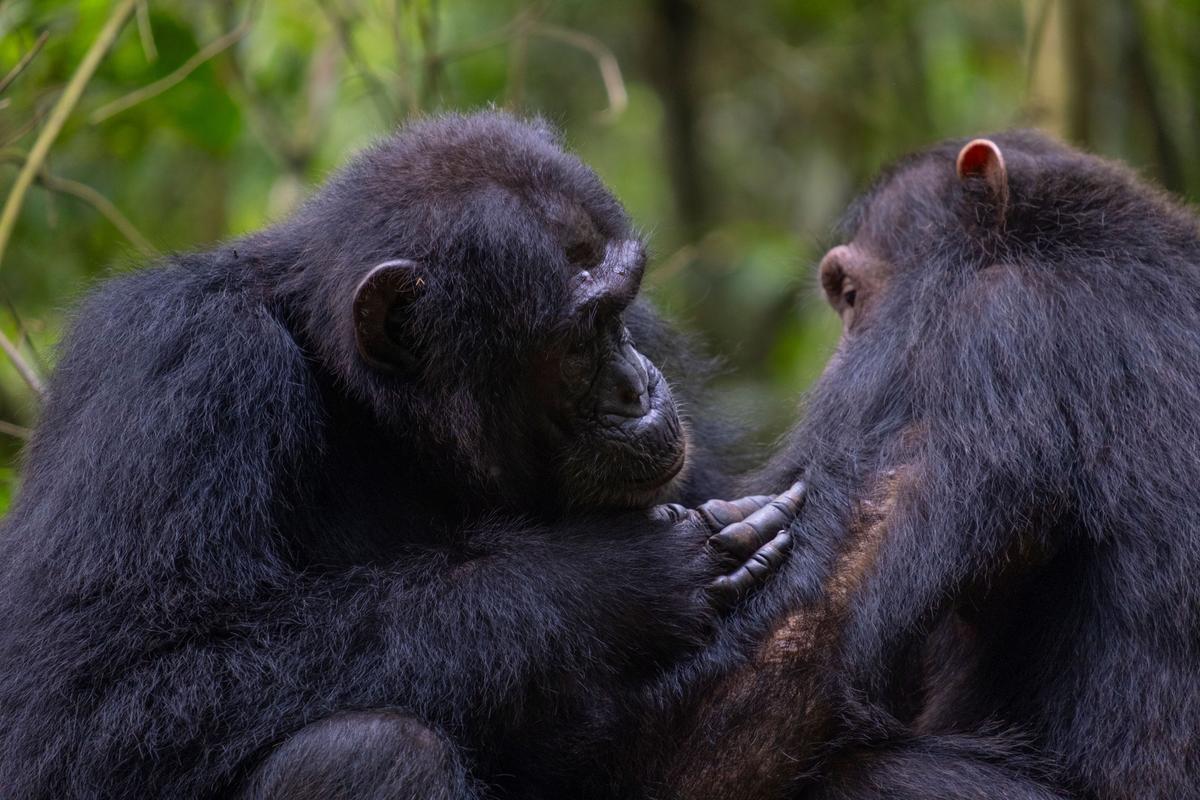Budongo Forest, Uganda —(Map)
Scientists have long known that chimpanzees sometimes use leaves or insects as medicine. Now, researchers studying chimpanzees in Uganda have discovered that the animals will sometimes provide “first aid” to each other. This suggests that chimpanzees may be able to think about how to help others, as well as themselves.
Chimpanzees are one of the animal species most closely related to humans. Because of this, researchers have carefully studied the lives of chimpanzees in many different ways. One area that has scientists curious is how chimpanzees care for themselves when they are sick or hurt.
In 2021, Dr. Elodie Freymann went to Uganda to study the chimpanzees in the Budongo Forest. She was interested in learning more about the methods the chimpanzees used to help themselves when they got hurt. Dr. Freymann had already done work investigating how chimps eat certain plants, using them as medicine.

(Source: Austen Deery, University of Oxford.)
As Dr. Freymann was looking through notes from other researchers, she noticed that there were several stories about chimpanzees caring for themselves or others. She and her team decided to look through 30 years of notes from researchers who had studied chimpanzees in the region. They also spent eight months studying two separate groups of chimpanzees in the forest.
The researchers found 34 examples of chimpanzees treating their own wounds. Often this sort of “self-care” was very basic, like licking a wound or cleaning themselves with leaves. Sometimes it was more complicated. In some cases, Dr. Freymann says, the chimpanzees “chew the plants up, and then apply the chewed material to the open injury.”
Licking a wound can help remove dirt and other small items that might make it hard for the wound to heal. What’s more, the spit of some chimps can have chemicals that can help keep a wound from getting infected. The leaves of some plants can do this, too.
![Four examples of chimps using plants for self-care. [Top left] KO chews stem bark of A. macrophylla. [Top right] KO detaches leaves from stem and dabs on wounded knee. [Bottom left] KO applies chewed stem bark to wound. [Bottom right] KO leaf-dabs with attached leaves.](https://newsforkids.net/wp-content/uploads/2025/06/chimp-self-care-1200.jpg)
(Source: Freymann et al., [CC BY 4.0], Frontiers in Ecology and Evolution.)
The self-care of the chimps was interesting. But even more interesting were the seven cases they found of chimpanzees helping out other chimpanzees. This seems to show that chimpanzees may be able to tell when another chimpanzee needs help. It’s fairly unusual for animals to try to help another injured animal.
In one case, a teenage male chimp was seen sucking on the leg of another young male chimp, helping clean a wound.
Some of the chimps who helped others weren’t even related. In one case, a male chimp helped an unrelated female chimp escape from a rope trap that had caught her.

(Source: Dr. Elodie Freymann, via Frontiers.)
One big question for the scientists is how much of this behavior comes from the chimpanzees’ natural instincts, and how much is learned from other chimps.
In one notable case, an adult female chewed a leaf to put on her wound. The chimp’s younger daughter saw this, and then did exactly the same thing, chewing up a leaf and putting it on her mother’s injury.
Dr. Freymann believes that some behaviors come from instinct, but others seem so complicated that they’re probably learned. She plans to continue studying chimpanzees in order to learn more.
Did You Know…?
One important question Dr. Freymann would like to answer is: If chimpanzees know how to help others, why don’t they do it more often?
😕
This map has not been loaded because of your cookie choices. To view the content, you can accept 'Non-necessary' cookies.
